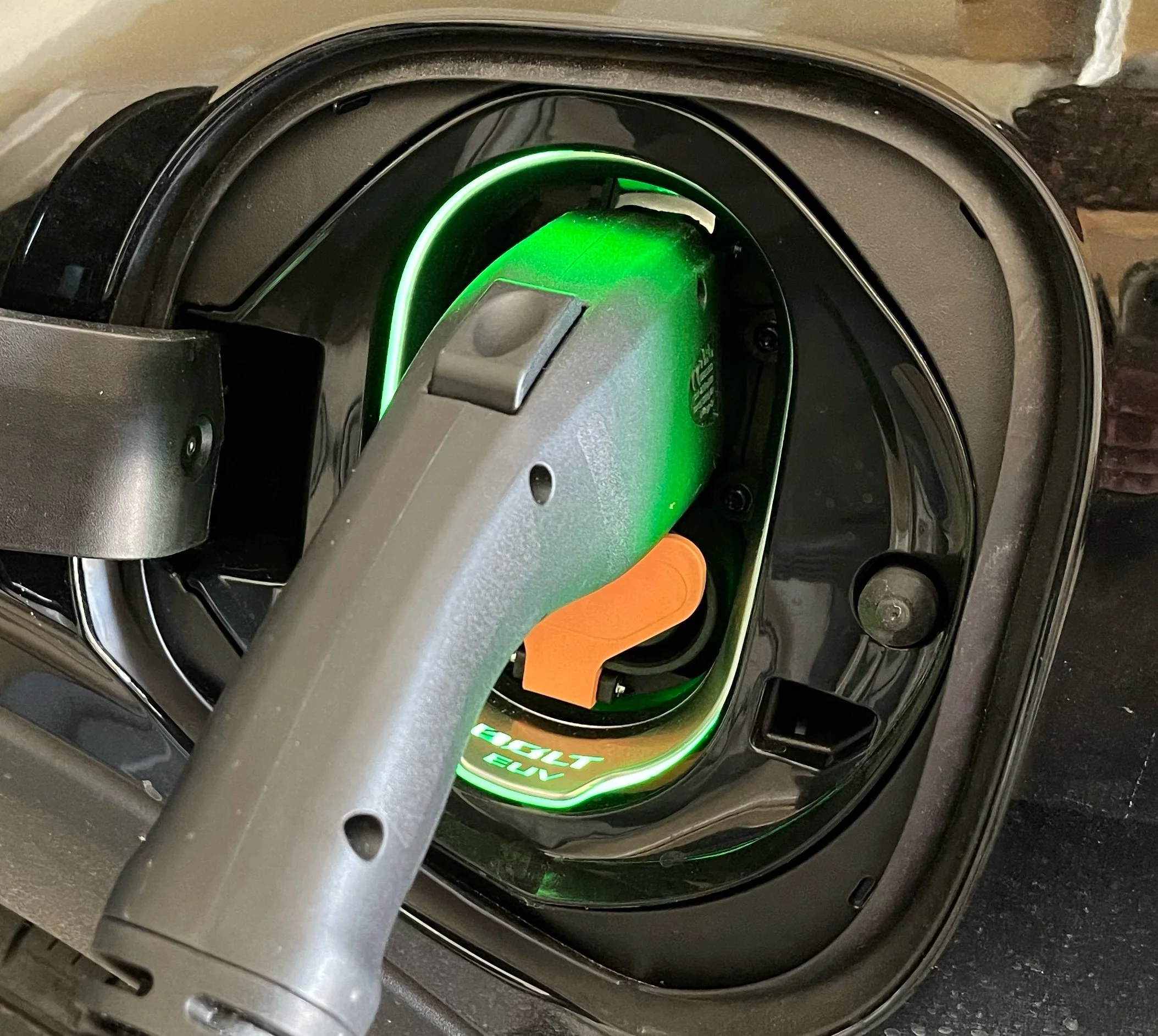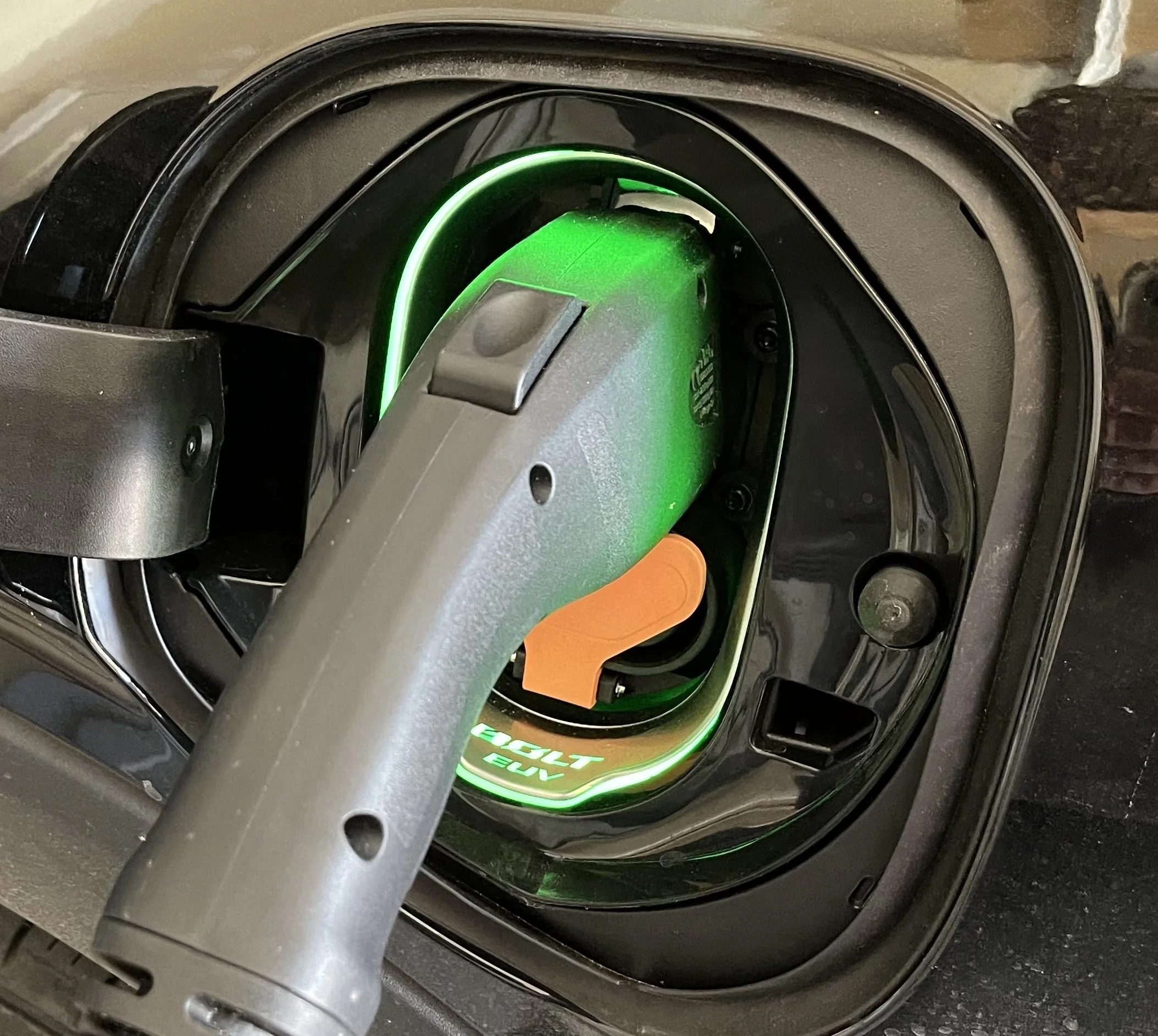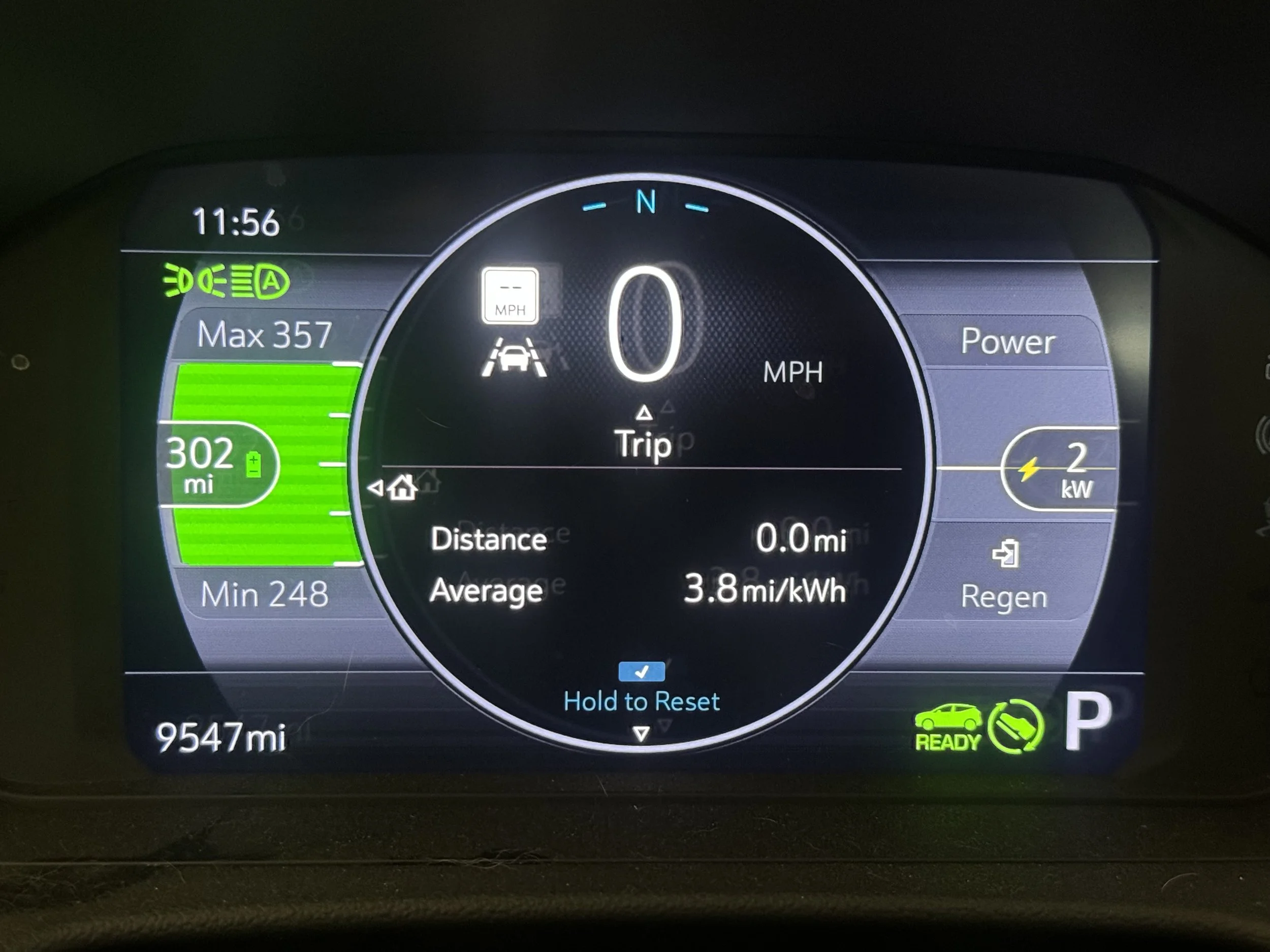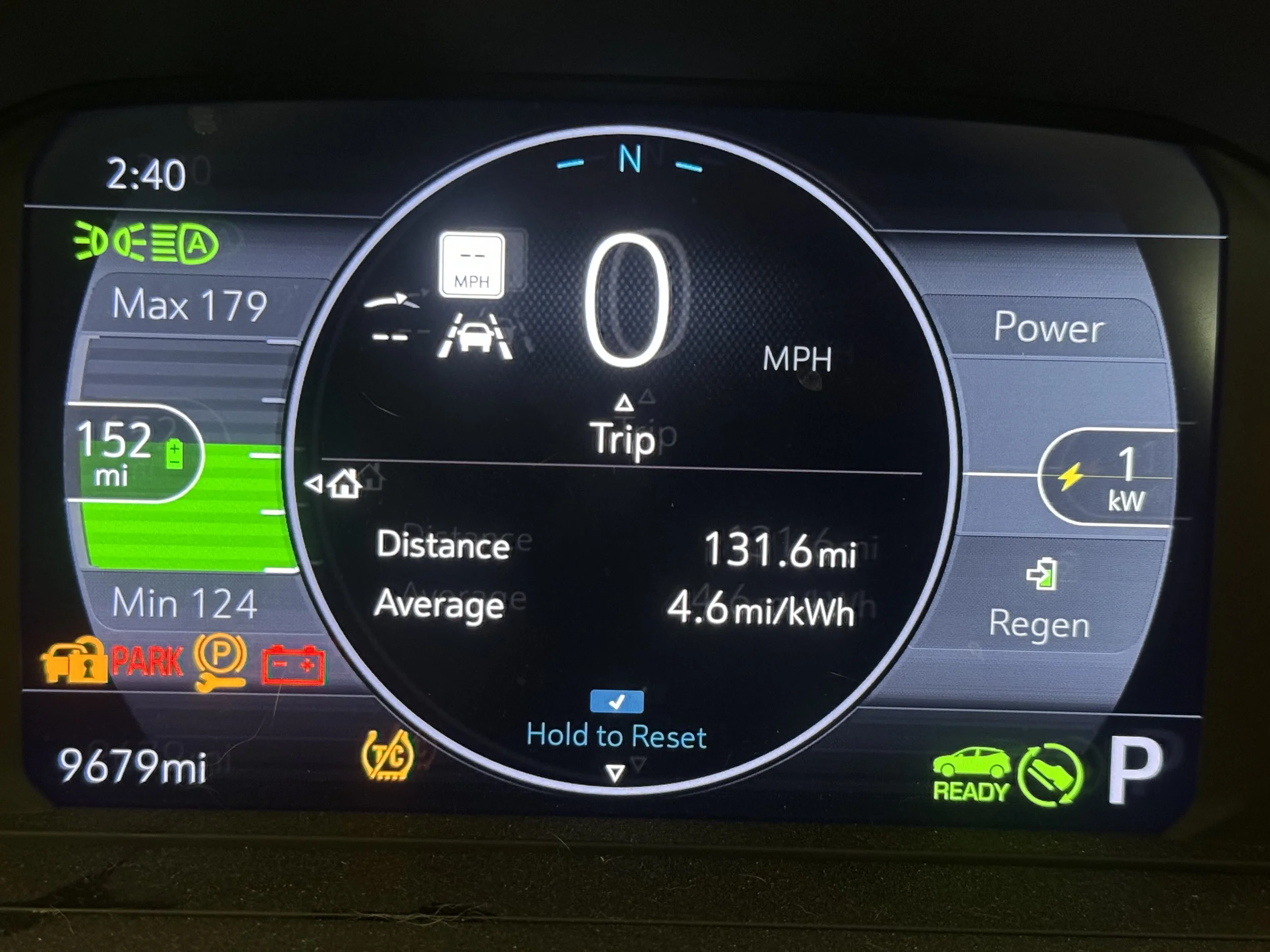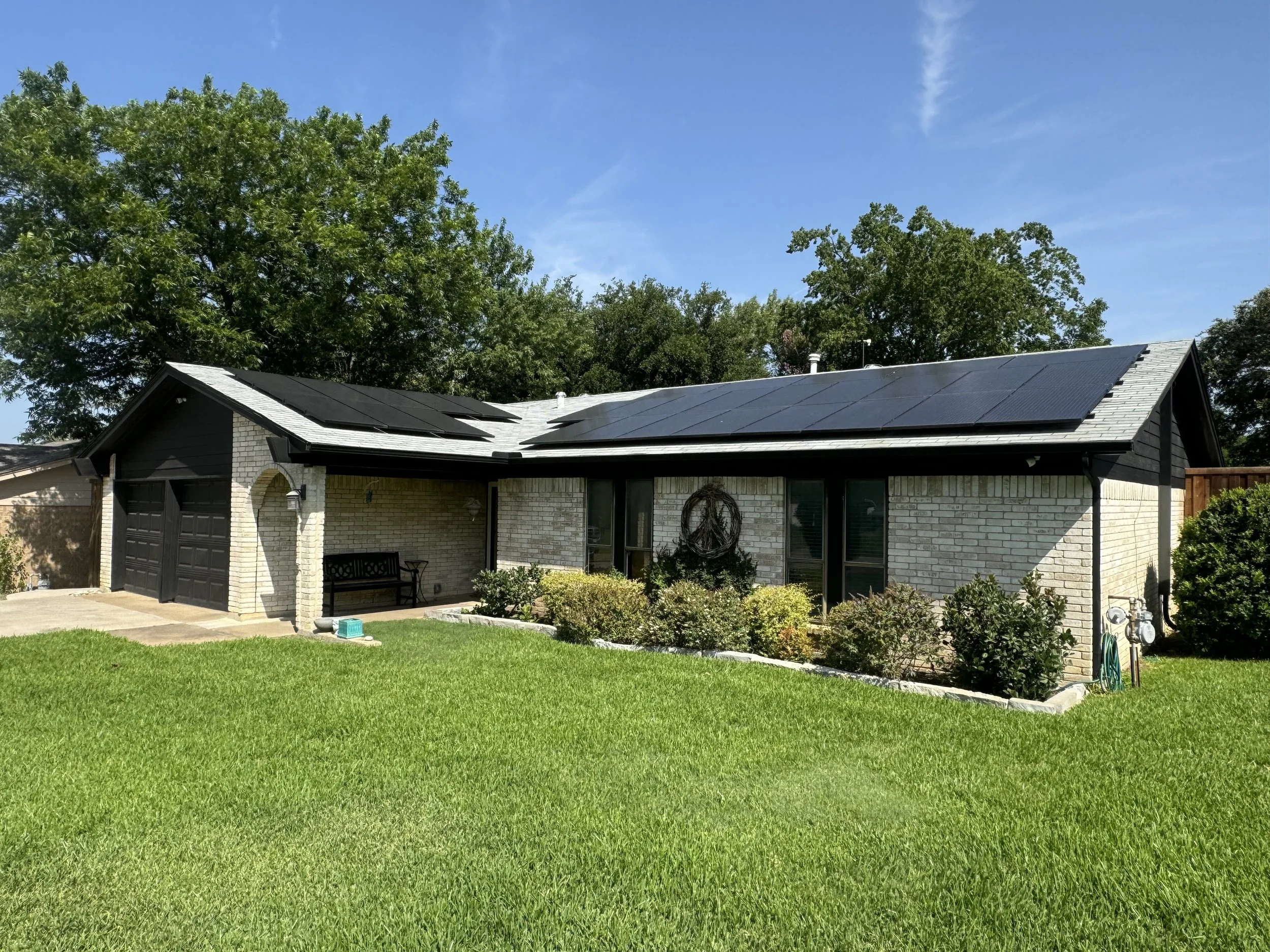The EV Over a Year Later
It’s been over a year since I got my Chevy Bolt EUV, so I guess it’s time for a check-in. I’ll cover some general usage, the whole charging angle, and touch on the privacy issues with all the car “smarts”.
General Usage
I’ve had no issues to speak of with the car. When I got it, the settings turned on the headlights in the dark automatically, the wipers come on automatically when it rains, and the handling is great. Granted I’m not one of those people who drives extremely fast and zips around other vehicles, so if the thing is “sporty” enough, I have no idea.
Features like the cameras (especially for backing up), detection of another vehicle in my blind spot, these things are completely new to me as my previous car was a 2012 Toyota Prius that had none of these features. This has made me a safer driver for sure. I’ve never professed to being anything other than a shitty driver, and I need all the help I can get.
EV-Related
The battery capacity is 65 kilowatts, and it has performed fine. It took me a while of experimentation with how and when to charge, what with the solar panels and house batteries, but right now I charge at lower amperage levels from the Wallbox charger I installed in the garage, and I typically charge on sunny days starting at about 9:30am. The amperage is slowly ramped up until I stop charging at noon. By adhering to that time schedule, the solar panels are generating enough to cover the basic load requirements for the household and the car charging without pulling any energy from the grid. I typically only charge until the EV is at roughly 80% capacity and then I stop plugging it in until it drops to 45-50% capacity. So I am usually charging about 3 or 4 days any given week, and as the solar panels cover it, I consider it free charging.
I had done a bit of experiments whenever I would drive to visit family and friends in the DFW metroplex where I live, to get an idea of what highway travel did as far as range goes, and I began to notice a bit of a trend. This is Texas, so it is not unusual for some of the freeways to have posted speed limits of 70mph (more on some toll roads), and even when the posted speed limit was 65mph, that is the speed of traffic in the “slow” lane. City driving in the metroplex can be a bit insane. So if I was driving over the speed limit, it seems my range depleted quicker, but with slightly slower speeds the range drastically improved. I had a few ideas based upon short 20-25 mile one-way trips, so I came up with a plan based on performance.
If I set my cruise control to 64mph and simply stay in one of the right lanes, I’m not flipped off or honked at, and I get fairly good range. As an experiment, I drove the “penis” route around the metroplex (yes, that’s a thing, someone else came up with it) and collected some stats.
I live in Arlington, and headed south to I-20 and began my trip “counter cock wise” (I never professed to being mature). There were two stops - one in Irving to allow for a 15 minute dog walk as I had Dahlia with me and she needed to go, and one for 5 minutes at a Starbucks drive-thru near the very end of the journey.
The trip took 2 hours and 44 minutes. When you reset the trip counter, it shows the default miles per kWh to be 3.8. Truthfully, anything over that is excellent. There was a bit of traffic in a couple of places plus my two stops, I traveled 131.6 miles, and the average miles per kilowatt hour (kWh) per the car was 4.6. I mean I had the A/C running (it was July 6th in Texas) and the seat coolers were also running for myself and the dog. I had started with the battery at 100% and it showed a projected range of 302 miles. At the end of the trip the battery was at 54% with a projected range of 152 miles. Yes, the math (miles / kWh) works out to 4.4 which is still good, but the car does a running average on the miles per kWh and there were long stretches where it was showing 4.7 or 4.8 as the running total. What does this mean? Well I could easily travel from Arlington to Austin directly without stopping. Or head up to Tulsa (my home town) and have to stop once.
I did use Super Cruise for part of the trip, but mainly made use of Adaptive Cruise Control which is like regular cruise control but it senses the car in front of you and slows down, then speeds back up. Super Cruise uses this as well, but I like manually changing lanes which Super Cruise doesn’t do. Plus if I can see ahead that a lane is much clearer I can start changing into that lane way ahead of time. And despite being a shitty driver, I do enjoy driving itself - I’d just prefer that there were no other vehicles on the road. So overall I enjoyed it. And Dahlia seemed to like it since she got to go for a walk in a new place with new smells, and she likes riding in the car anyway.
Smarts
The car came with both a subscription to SiriusXM radio and OnStar. I never used SiriusXM, which was free for three months, so I just let that expire. OnStar (a well-known GM product) was also free for a short time but I did have to sign up to use it. I did so, and very quickly my insurance rates increased. I barely used it and found it added nothing. I forgot to get it turned off, probably assuming it would expire after the free trial, but instead I was being charged a decent chunk. Two separate monthly charges that added up to $47.02 monthly as the trial was for OnStar’s top tier.
I know some people take apart the car, disconnect wires and whatnot, but I opted not to take things that far. I do pair my phone for maps and podcasts, so I am definitely not 100% completely privacy-nuts about this car, but I have gone through every privacy-related setting even remotely related to the car and the phone and only use the bare minimum.
I should have written down what I turned off, but what I did was go through every month every single setting in every related application to the car and look for things to turn off. I don’t remember all of them except one - in the My Chevrolet app was Smart Driver, which was where the car insurance rate hike came from. Granted, because of various complaints from consumers (including myself) and consumer advocacy groups, Chevrolet discontinued Smart Driver in April 2024.
Without OnStar, the car’s WiFi hotspot no longer worked. Yes, modern cars have a WiFi hotspot and with OnStar there is a data plan (via AT&T, it uses cellular data) so people in the car can connect up and do internet things. No you cannot hide the SSID, although you can set a password. I played with it a bit, it resisted basic WiFi attacks, but it really seemed best for basic web surfing and email, not serious streaming, so I turned it off. It is better than WiFi when traveling by train or plane, which isn’t saying much, but there you have it. I did notice that when I turned it off, Apple CarPlay stopped working, but I usually plugged in the iPhone with a USB cable anyway, and when I did that Apple CarPlay worked fine. Yes, the little shelf inside the console where the USB cable plugs in has a wireless charger, but I am using that little shelf for other things anyway. I usually plug in the iPhone as it is a drain on the iPhone’s battery if it is using GPS. Since traffic is complete shit in the DFW metroplex in general and Arlington’s big entertainment district is near where I live, I used the mapping a lot simply to make sure I know where traffic jams are so I can avoid them. So the iPhone is nearly always plugged in.
Odd Observations
I’ve got a few odd things I’ve seen or noticed related to EVs.
If you’re using regenerative braking like I am to stop the vehicle most of the time, if you charge up to 100% then regenerative braking doesn’t work. The braked-gen’d energy has nowhere to go, so it simply doesn’t function. Regular brake pedal is required when that happens.
There isn’t a huge amount of charging infrastructure, and what is there is sometimes questionable. Finding a charging station isn’t too hard in populated areas (for me that’s the DFW metroplex), but my experience with the apps and the stations themselves are sometimes weird. Informally I’ve found on average 10% of stations are out of service in large urban settings, and fast chargers are usually occupied. Popular or populated places (like a casino in nearby Oklahoma) will have quicker repairs done to failing equipment, but they are often completely occupied.
Most phone charging apps suck. These are the apps you use to use some vendor’s charger, or they will be maps that show multiple vendors’ chargers and possibly allow you to initial a transaction. Some will list charging stations available, but when you find them they are outside a large office building and are for employee use only. Some will have outdated information or not list those stations temporarily or permanently inoperable. Some chargers might be in a private parking garage which requires a permit to use them.
Low-priced chargers sometimes have a catch. There is one near my home and the dog and I will use it as a parking spot for some of our early morning walks. While it is fairly cheap (and you can simply pay with ApplePay, no account needed), it is only 6.5 amps, so not a lot of juice. And there are two chargers on the shared pole and the current is shared, so if you plug in when someone else is plugged in you both only get 3.25 amps.
Some charging vendors themselves have inconsistencies between stations. Chargepoint will allow for ApplePay and no account at some stations, but a few miles away you have to use their account. I get that rates could be different (a hotel or shopping center might want it cheap and partially fund it, a parking garage might not), but the interface is exactly the same and so it is usually trial and error. I once parked at a hospital with a charger out front, went through the entire process to activate the charger, and when I left it simply reported that the charge amount transaction was zero. No indication anywhere that the charging was free.
Would I do it all again?
Yes. I picked the correct car for my needs, it was quite affordable. Since I’ve installed a home charger and worked out my charging schedule to match the times I have excess energy from the solar panels, I don’t pay for charging (except when out with the dog for a walk near a charger). I did have a bit of range angst at first, worried that I’d run out of charge and be stranded, but that disappeared almost immediately. Like a gas car, one simply plans ahead. If you’re like me you like to stop and stretch your legs or grab a bite when on a road trip, so it is not impossible to find a charger near an eatery. If anyone asks me, I say yes, get an EV. It’s worth it.
